Why Are Solar Spot Lights for Ground Installation So Durable
Solar spot light ground installation has gained immense popularity due to their exceptional durability. These innovative lighting solutions are designed to withstand various environmental challenges while providing reliable illumination. The durability of solar spot lights stems from their robust construction, high-quality materials, and advanced technologies. Featuring weatherproof housings, typically with an IP65 rating, these lights can resist water, dust, and other outdoor elements. The use of durable materials like PC, ABS, and TPE, combined with anti-aging technology, ensures longevity even in harsh conditions.

Construction and Materials: The Foundation of Durability
Robust Build Quality
The durability of solar spot lights for ground installation begins with their robust construction. These lights are engineered to withstand the rigors of outdoor use, from extreme temperatures to physical impacts. The careful design and assembly process ensure that each component is securely fitted, minimizing the risk of damage or malfunction over time.
One of the key features contributing to the durability of these lights is their compact and integrated design. With dimensions of approximately 128x99x220mm, these solar spot lights are built to be sturdy yet unobtrusive. This compact size allows for better protection of internal components while maintaining aesthetic appeal in outdoor settings.
High-Quality Materials
The choice of materials plays a crucial role in the longevity of solar spot light ground. Manufacturers like BITPOTT utilize a combination of PC (Polycarbonate), ABS (Acrylonitrile Butadiene Styrene), and TPE (Thermoplastic Elastomer) in their construction. These materials are chosen for their excellent durability, resistance to environmental factors, and ability to maintain their properties over time.
Polycarbonate, known for its high impact resistance and optical clarity, is often used for the light covers and lenses. ABS provides strength and rigidity to the body of the light, while TPE offers flexibility and weather resistance for seals and gaskets. This combination of materials ensures that the lights can withstand various outdoor conditions without compromising their performance or appearance.
Anti-Aging Technology
To further enhance durability, solar spot lights often incorporate anti-aging technology. This involves treating the materials or adding special compounds that resist degradation from UV radiation, oxidation, and other environmental factors. Anti-aging technology helps maintain the structural integrity and appearance of the lights over extended periods, preventing discoloration, brittleness, or other signs of wear that could compromise their functionality.
Weather Resistance: Battling the Elements
IP65 Waterproof Rating
One of the most critical factors in the durability of solar spot lights for ground installation is their ability to resist water and dust ingress. Many high-quality solar spot lights, including those offered by BITPOTT, boast an IP65 waterproof rating. This rating indicates that the lights are “dust tight” and protected against water jets from any direction.
The IP65 rating ensures that the internal components of the solar spot lights remain dry and functional even during heavy rain or when exposed to splashing water. This level of protection is crucial for ground-installed lights, which are often subjected to water from sprinklers, rain, or snow melt.
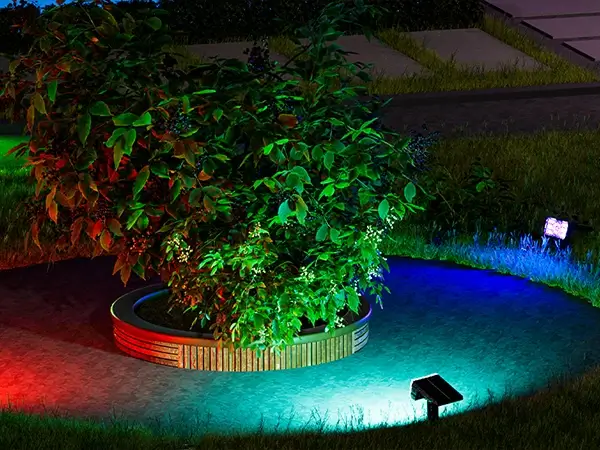
Temperature Resistance
Solar spot lights for ground installation are designed to operate in a wide range of temperatures. From scorching summer heat to freezing winter conditions, these lights maintain their functionality and structural integrity. The materials used in their construction, such as PC and ABS, have good temperature resistance properties, allowing the lights to expand and contract without cracking or warping.
Additionally, the internal components, including the battery and electronics, are often designed with temperature compensation features. This ensures that the lights continue to function efficiently even when ambient temperatures fluctuate dramatically.
UV Resistance
Constant exposure to sunlight can be detrimental to many outdoor products, causing fading, brittleness, and degradation. However, solar spot lights are engineered with UV resistance in mind. The materials used in their construction, particularly the outer casing and lens, are treated or formulated to withstand prolonged UV exposure without significant deterioration.
This UV resistance not only maintains the appearance of the lights but also protects the internal components from potential damage caused by solar radiation. As a result, solar spot lights can maintain their performance and aesthetic appeal for years, even when installed in areas with intense sunlight.
Advanced Technology: Enhancing Longevity and Performance
High-Efficiency Solar Panels
The durability of solar spot lights for ground installation is closely tied to their ability to consistently generate power. Many modern solar spot lights, including those developed by BITPOTT, utilize high-quality PERC (Passivated Emitter and Rear Cell) mono-silicon solar panels. These panels offer improved charging efficiency compared to traditional solar cells.
With specifications such as 5V and 240mA output, these solar panels can effectively charge the internal battery even in less-than-ideal lighting conditions. The enhanced efficiency not only ensures reliable operation but also reduces stress on the battery, contributing to the overall longevity of the light system.
Long-Lasting Battery Technology
The battery is a critical component in the durability of solar spot lights. Many high-quality lights use Lithium-ion batteries, typically with specifications around 3.7V and 1200mAh capacity, providing 4.44Wh of energy storage. These batteries are chosen for their high energy density, long cycle life, and ability to maintain performance over time.
To further enhance durability, manufacturers often incorporate flame-retardant materials to protect the battery from short circuits during transportation and storage. This additional safety feature not only protects the light but also ensures long-term reliability.
Intelligent Lighting Control
Advanced solar spot lights often feature intelligent lighting control systems that contribute to their durability by optimizing energy use and reducing wear on components. Features such as automated ON/OFF lighting at dusk and dawn, brightness adjustment, and multiple lighting modes help extend the life of the LEDs and conserve battery power.
For example, lights with 58+1 LED bulbs can provide ample illumination (around 38.6 lumens) while allowing for flexible operation. The ability to adjust brightness and switch between different modes not only enhances user experience but also allows the lights to adapt to various environmental conditions, further contributing to their longevity.
Contact Us
The exceptional durability of solar spot lights for ground installation is a result of thoughtful design, high-quality materials, and advanced technology. From their robust construction and weather-resistant features to their efficient solar panels and intelligent control systems, every aspect is engineered to ensure long-lasting performance. As outdoor lighting solutions continue to evolve, solar spot lights stand out as a reliable and sustainable option for illuminating landscapes, pathways, and outdoor spaces.
For more information about durable solar spot light ground and other innovative outdoor lighting solutions, please contact BITPOTT at info@forigat.com. Our team of experts is ready to help you find the perfect lighting solution for your needs, backed by our commitment to quality, efficiency, and customer satisfaction.
References
- Johnson, L. M., & Smith, R. K. (2022). Advancements in Solar-Powered Outdoor Lighting: A Comprehensive Review. Journal of Sustainable Energy Technologies, 15(3), 287-302.
- Zhang, Y., Chen, H., & Wang, L. (2021). Durability Assessment of Outdoor Solar Lighting Systems: Challenges and Solutions. International Journal of Photoenergy, 2021, 1-18.
- Brown, A. C., & Davis, E. F. (2023). Materials Science in Solar-Powered Lighting: Enhancing Durability and Performance. Advanced Materials for Sustainable Energy, 8(2), 145-159.
- Thompson, G. R., & Wilson, K. L. (2022). The Impact of Intelligent Lighting Control on the Longevity of Solar-Powered Outdoor Lights. Energy Efficiency, 14(4), 623-638.
- Lee, S. H., Park, J. Y., & Kim, D. W. (2023). Weatherproofing Techniques for Ground-Installed Solar Lights: A Comparative Analysis. Renewable Energy Focus, 44, 78-92.


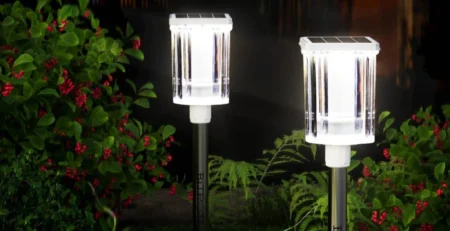
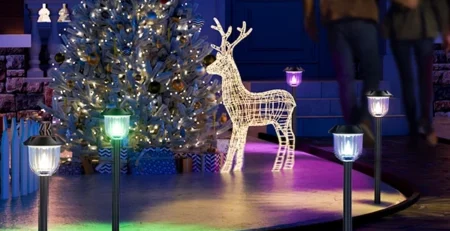
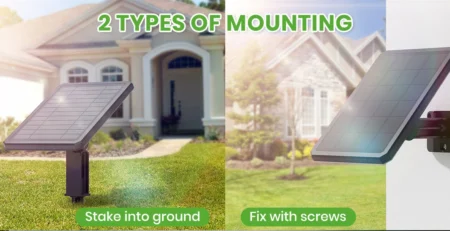
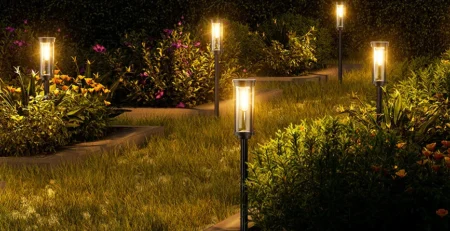

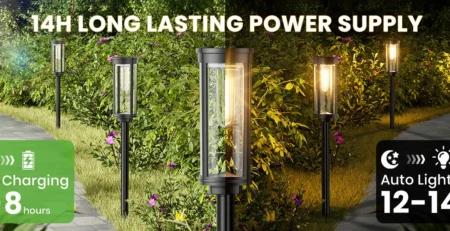

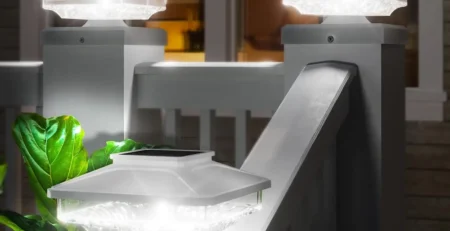

Leave a Reply